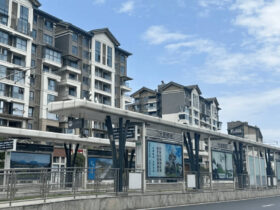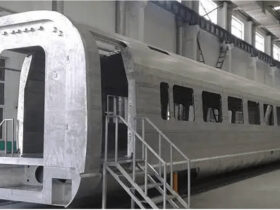Aluminium for rail
Aluminium for rail: Improving efficiency and sustainability
The rail industry has made great strides in recent years with an increased focus on efficiency, sustainability and passenger comfort. Aluminium, as a lightweight, corrosion-resistant metal, has played a key role in these advances, becoming the material of choice for a wide range of rail products and components.
The significance of aluminium in the rail industry can be understood through its unique properties and contributions:
1. Lightweight construction
One of the main advantages of aluminium is its low density, making it much lighter than steel or other metals. This lightweight property is crucial for the railway industry as it reduces the total weight of the train and components, thereby increasing energy efficiency and reducing track wear.
2. Corrosion resistance
Aluminium naturally forms a protective oxide layer on its surface, making it highly resistant to corrosion. This corrosion resistance ensures the longevity of aluminium railway components, even when exposed to harsh environmental conditions and various cleaning agents.
3. Design flexibility
Aluminium’s ductility and versatility allow it to be manufactured in intricate shapes for a wide range of railway components that require bespoke designs to improve aerodynamics, aesthetics or functionality.
4. Sustainability
The railway industry is placing increasing emphasis on sustainability, and aluminium is perfectly aligned with these goals. Fully recyclable, aluminium is the environmentally friendly choice for railway products.
Aluminium products are used in all aspects of the rail industry:
1. Railway vehicles
Aluminium is used in the manufacture of railway vehicle bodies, interior components and exterior panels. Its lightweight properties contribute to the energy efficiency and acceleration of trains.
2. Windows and doors
Aluminium windows and doors are common in railway vehicles. They are lightweight, durable and provide effective protection against the external environment, enhancing passenger comfort.
3. Electrical components
Aluminium has good electrical conductivity and can be used for electrical components such as overhead wires and conductors. It helps to distribute electricity efficiently across the railway network.
4. Infrastructure
Aluminium is used in the construction of rail infrastructure including bridges, platforms and track components and its corrosion resistance ensures longevity.
Conclusion
Aluminium products have revolutionised the railway industry by providing lightweight, corrosion resistant and sustainable solutions. Whether in the manufacture of railway vehicles, windows and doors or infrastructure components, aluminium plays a key role in improving the efficiency, comfort and environmental sustainability of rail transport. Contact us for customised aluminium for rail transport so you can experience professional and fast delivery.






